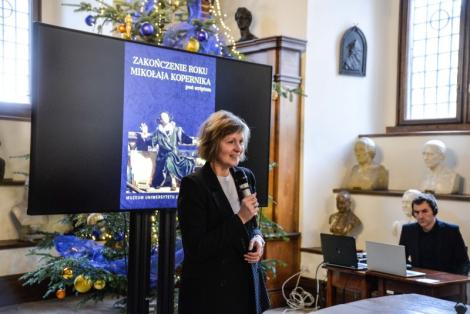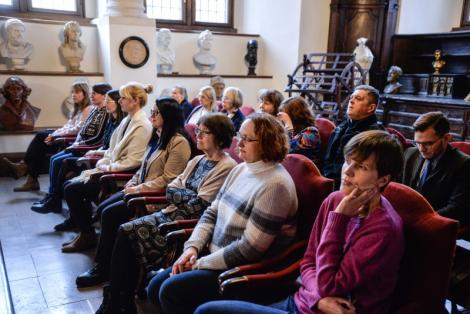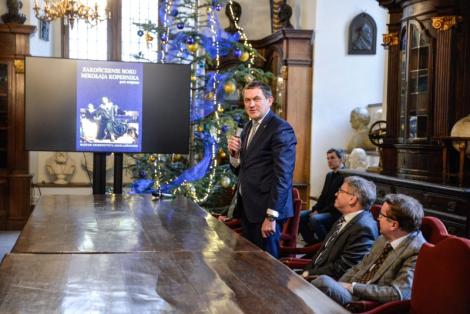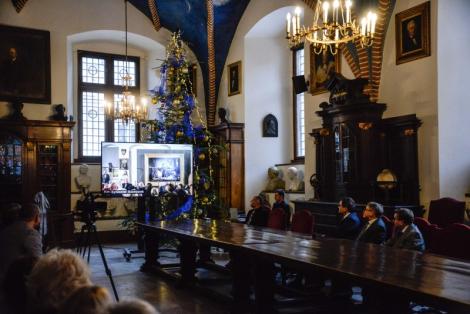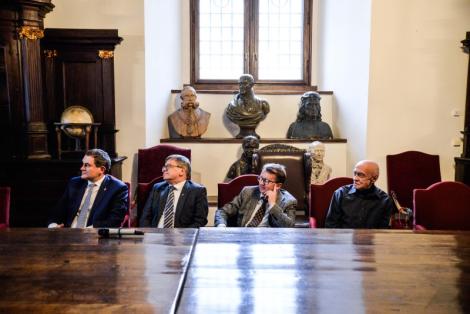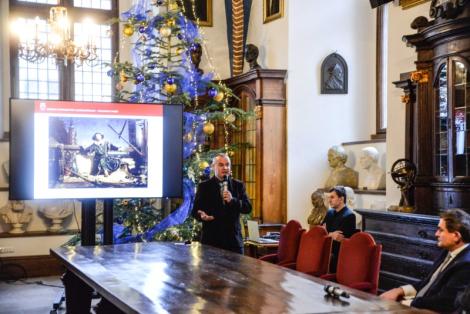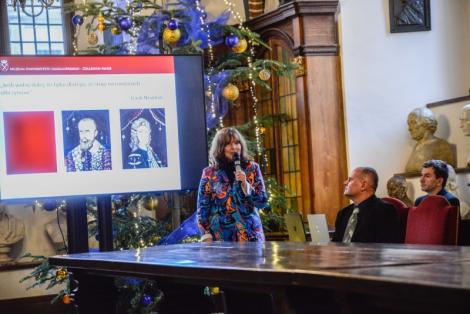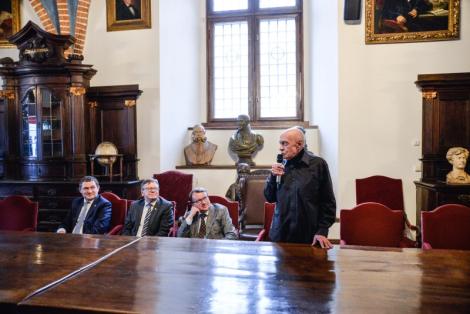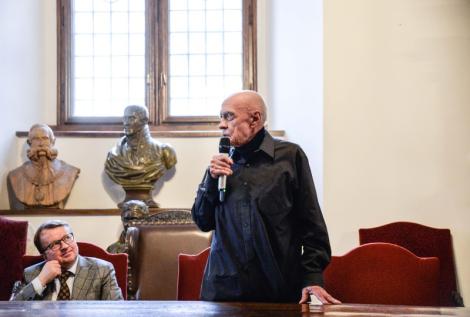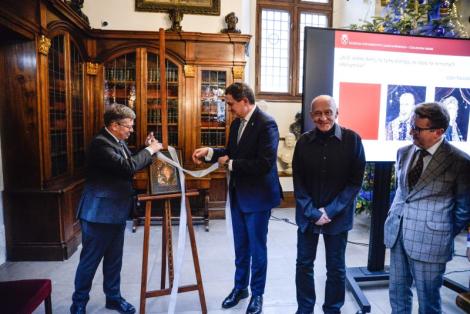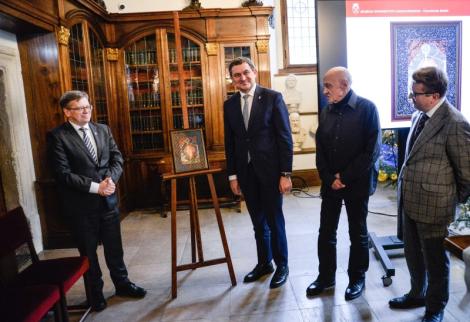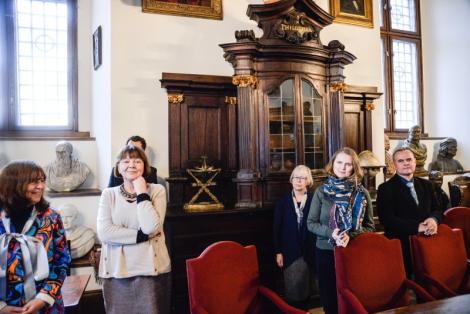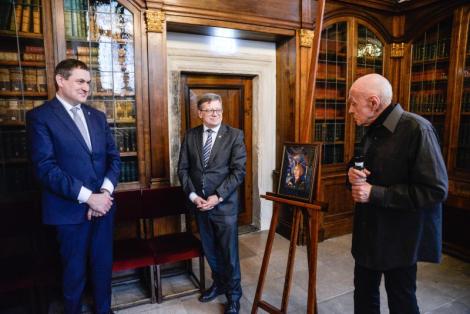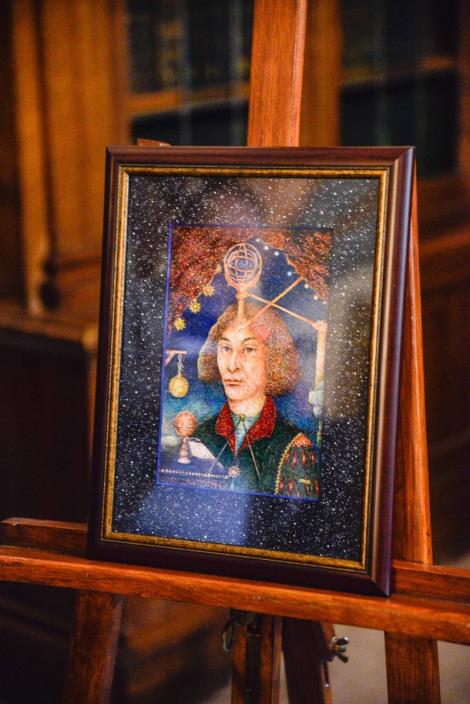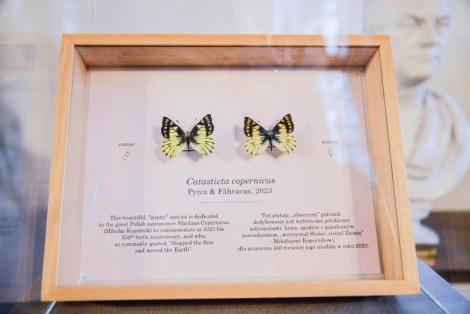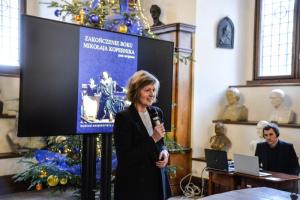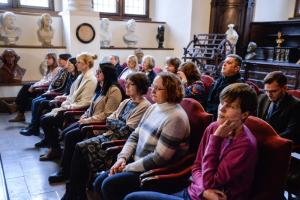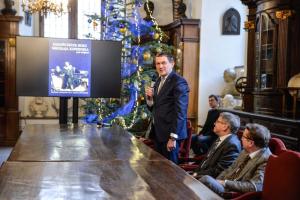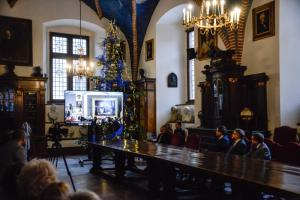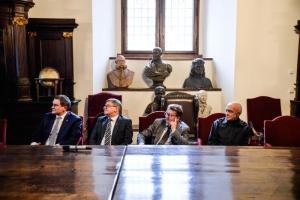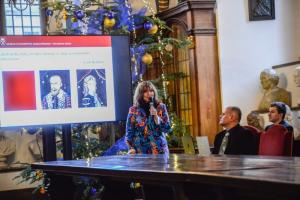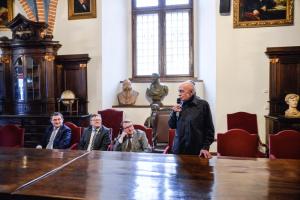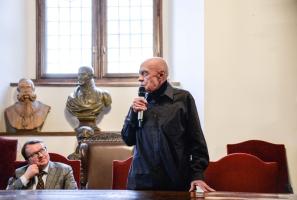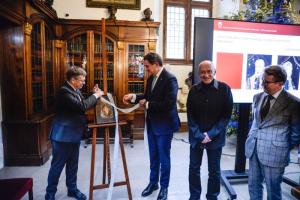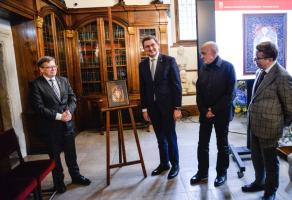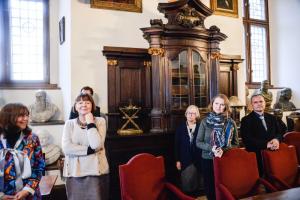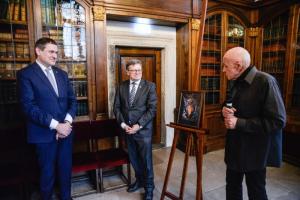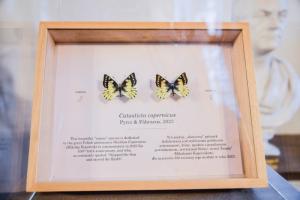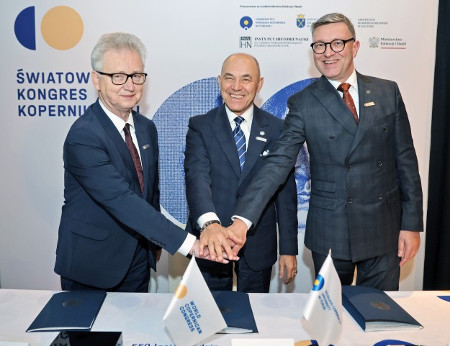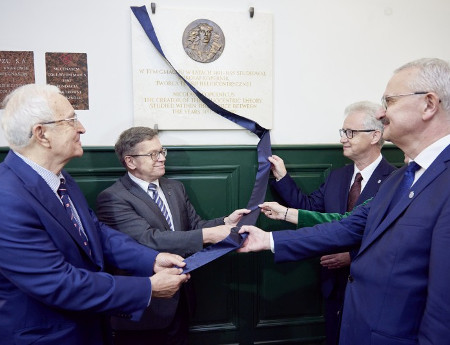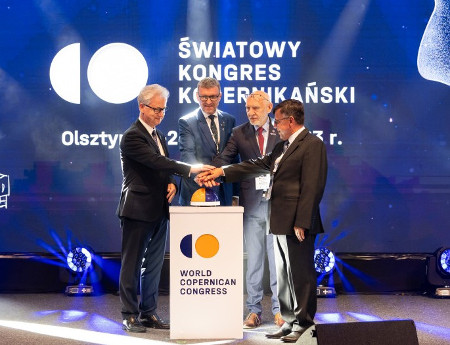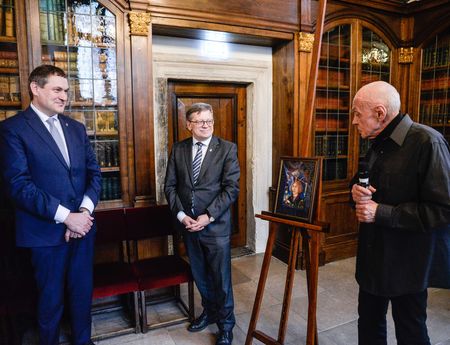
On 6 December, an exceptional portrait of Nicolaus Copernicus by Kraków painter Władysław Szyszko was unveiled in the Libraria Room of JU Collegium Maius. The event served as an ‘artistic post scriptum’ to the Year of Nicolaus Copernicus, which was officially closed in September.
The meeting began with a summary of the various activities related to exhibition, education and promotion of culture organised by both the Jagiellonian University Museum and other similar Polish institutions in the recent time. Next, Dr Maciej Kluza, head of the JU Department of Museum Collections, delivered an introductory lecture entitled ‘Copernicus–Galileo–Newton’, discussing the achievements of the three astronomers.
The portrait was then presented to the audience. ‘As we expected, the painting shows Copernicus painted in Władysław Szyszko’s signature style. His face is bright, his clothes whimsical and colourful. Next to him there are his attributes, astrolabe and triquetrum, and an armillary sphere grows out of his head, like a tree of knowledge. Over the years, there have been some changes in the way the artist depicts faces and bodies’, said Desisława Christozowa-Gurgul from the JU Museum. She added: ‘After more than 40 years, Władysław Szyszko has finished his ‘triptych’ for Collegium Maius. There are certain differences between the portraits of Galileo and Newton versus the portrait of Copernicus, but it is clearly visible they are a part of the same series, painted in the same style. Each of them feature a beautiful curtain, perhaps symbolising their role in unveiling the mysteries of the universe’.
The event was accompanied by the presentation of a newly discovered species of butterfly Catasticta copernicus from the collection of JU Nature Education Centre, named after the great Polish astronomer. It was discovered by a research expedition from the University of Lund which featured Prof. Tomasz Pyrcz from the JU Institute of Zoology and Biomedical Research. The butterfly is endemic to the Peruvian Andes and lives about 3,500 thousand metres above seal level.


